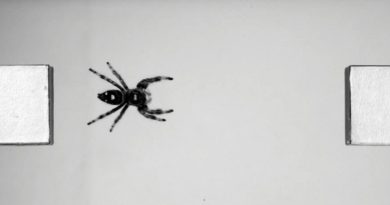Praying Mantis, Do You Want To Have It One At Home?
Prey mantis – There are over 2,000 types of praying mantises. Some of them are available from hobbyists, such as, for example, the African species of praying mantis (actually more than one type – Sphodromantis belachowski, centralis, gastrica, vidiris and lineola), which are very good choice for beginners.
Praying mantis reach length of up to 15.2 cm, depending on the species and sex. However, most often we meet with a size of 5-7.6 cm when it comes to pet prey mantis.
Life expectancy depends on the type of praying mantises, but the maximum lifetime of about a year. However, the percentage longest living about half a year (some even less).
Praying mantis vary in size, shape and color. Some look like twigs (often used to camouflage), some resemble crumpled dry leaves, while some are also painted to resemble flowers.
Their appearance varies from climate (mainly in terms of tropical species). However, all the praying mantis are carnivorous, feeding on other insects and spiders (some larger praying mantis can eat small amphibians and reptiles).
Keeping
Praying mantis should keep separated. However, they need small space – usually to the aquarium should be at least two times higher than the praying mantis, but not much more than that. If it is too large, your pet will be difficult to find prey. Aquarium dimensions of 30.5 x 30.5 cm will suit the majority. It should provide a mesh cover.
The substrate and furniture
Lining of 2.5 or 5 cm soil, peat or a mixture of soil with sand, vermiculite or similar is recommended for praying mantis. This will maintain optimal humidity. You should add a few sprigs and set them to the top of the aquarium, as they will be required to molt. Live or artificial plants could also serve this purpose, but try not to overload the aquarium. Your praying mantis will need space to move around and love.
Temperature
This is one of the most important aspects of storage, and usually varies from species to species. Some species are tolerant to temperature variations, while others have specific requirements, so check what is necessary for the type you have. The most common pet is definitely an African praying mantis, and the appropriate temperature of 21 ° C -30 ° C. If necessary artificial reheating, can be used warming pad (which is sold for reptiles and hermit crabs).
Humidity and water
The need for hydration also depend on the kind of praying mantises (African requiring 60% humidity). Blessed daily spraying of the aquarium will provide enough humidity. Small, shallow container with water containing gravel or part of the marine sponge may affect the preventive strangulation, but also to provide humidity.
Most mantis will take water from leaves previously sprayed (although some will serve a bowl with water). Of course, too much humidity is not recommended.
Nutrition praying mantises
It is best to give them the previously fed on insects. Nutritional needs will be determined by what you offer them a variety of insects (fruit flies and nymphs of aphids, small praying mantis, various insects such as moths, then fruit flies, crickets or worms flour for larger specimens). Pray should previously well-fed (before praying mantises offer prey, feeding it food rich in vitamins).
Interesting facts about the prey mantis
• Mantis go through a simple (incomplete) metamorphosis, but instead larval stage (as with caterpillars, for example), we get a very small wings adults (nymphs) that mature and moult several times.
• Mantis is often purchased for garden purposes, as well as pest destroyers.


